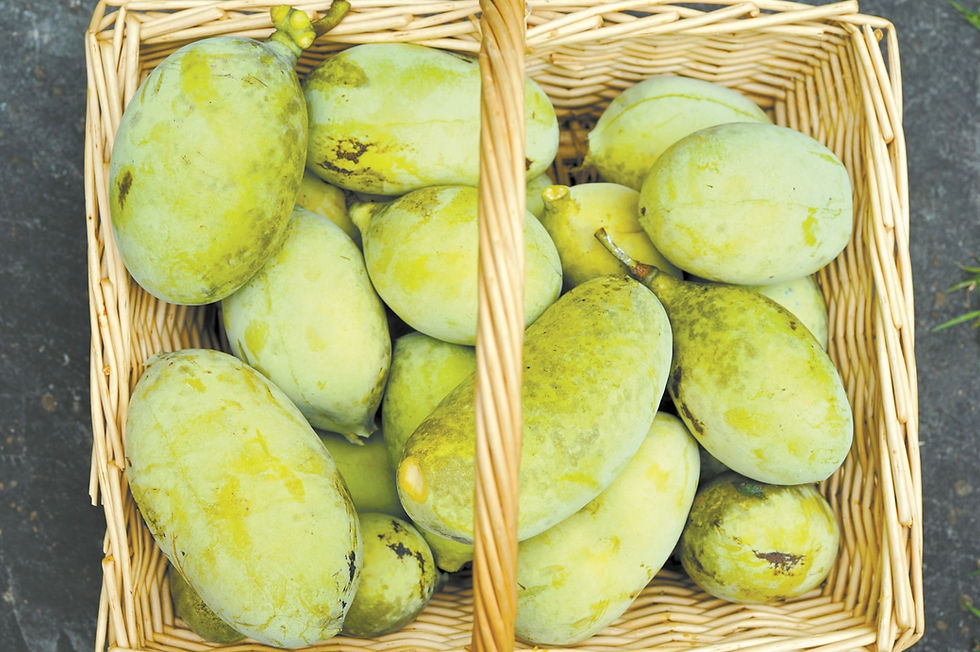Artist is keeping it surreal at KMA
- Joyce Corrigan
- Jul 24
- 4 min read
Updated: Jul 31



Leonora Carrington works on display through Oct. 5

By JOYCE CORRIGAN
“They are not merely painted, they are brewed,” British poet and art patron Edward James once said of Leonora Carrington’s canvases, “… materialized in a cauldron at the stroke of midnight.”
The rebellious, raven-haired Carrington — hailed as one of surrealism’s “three witches” along with two female painters who similarly explored occult practices — routinely conjured dreamscapes populated with spectral hybrid figures, subconscious landscapes and esoteric symbols drawn from Egyptian and Kabbalistic traditions. Drift into the Katonah Museum of Art to see “Leonora Carrington: Dream Weaver” and you’ll find yourself entranced, deeply absorbed in the enigmatic poetry of her compositions.
Since her death in 2011 at age 94, Carrington’s career has been enjoying a well-deserved resurgence. Not only has she been prominently celebrated in exhibitions at the Tate Modern, the Metropolitan Museum of Art, and the Venice Biennale, last year her “Les Distractions de Dagobert” painting sold at Sotheby’s for a record-breaking $28.5 million.
Running through Oct. 5, the new KMA exhibition explores the enduring appeal of a singular artist whose work opens doorways into realms of myth, mysticism and the feminine subconscious.
Born in England in 1917, Carrington painted until the end of her life in Mexico, where she’d lived for decades.
Curated by Gannit Ankori, chief curator of the Rose Art Museum at Brandeis University in Waltham, Mass., where this exhibition originated, the show features over 30 of Carrington’s works, many on loan from private collections and rarely on public display.
It’s been a full century since the likes of Salvador Dali, René Magritte, Dorothea Tanning, Méret Oppenheim and Max Ernst introduced the hallucinatory paintings that challenged the constraints of human logic in the wake of the devastation of World War I. What would come to be called “surrealism,” steeped in the then-current psychoanalytic theories of Sigmund Freud, explored and mined the unconscious, embracing the power of dreams.
Raised in a wealthy Anglo-Irish family, Carrington spent her early years in Crookhey Hall, an imposing Gothic manor house whose menacing character greatly influenced her aesthetic. Rejecting the rigid gender norms and elitist expectations of her upbringing, she escaped into fantastical stories of fairies and other shape-shifting spirits from Celtic folklore told to her by her Irish grandmother and nanny.
“At an early age, she found refuge in drawing,” Ankori said. “Her free spirit was clearly misunderstood by the nuns at her Catholic schools, from which she was expelled.”
Carrington ultimately turned her back on upper class conventions and chose instead the heady avant-garde meccas of London and Florence. At 19, she ran away to Paris with artist superstar Ernst, joined the surrealist movement, and severed ties with her family. She and Ernst did portraits of one another, but the relationship was short-lived.
“I didn’t have time to be anyone’s muse,” Carrington famously declared. “I was too busy rebelling against my family and learning to be an artist.”
Her defiant spirit and wildly imaginative inner life came to life on canvas. “Here are vivid, otherworldly landscapes filled with fantastical creatures and arcane symbols,” Ankori noted. “They are woven from threads of her personal biography, ancient religions and the occult as well as Celtic and — after her move to Mexico — pre-Hispanic mythologies, all imbued with her feminist and ecological concerns.”
One of Ankori’s favorite female figures in the exhibition appears in “Dream Weaver” of 1955: A luminous woman, crowned with wild hair, holds a single symbolic thread — Christian and Buddhist in meaning — between her uplifted fingers, weaving a dream-creature from its length. A bold and independent conjurer of magical worlds, entwined with the hybrid being she creates, she could easily be Carrington herself, Ankori believes.
In “Rabbis,” Carrington explores Jewish mysticism and honors the intellectual émigré community that found refuge in Mexico during WWII, as she did. The central figures are a blue-bearded rabbi and a red bare-breasted female monkey. Scholars suggest Carrington identified with the monkey, associated in Mayan mythology with art, ritual and prophecy.
“Leonora Carrington was a fiercely independent thinker who eschewed societal norms to pursue her passions,” remarked KMA Executive Director Michelle Yun Mapplethorpe. “Her dedication to her singular artistic vision is vindicated through the critical reception of her practice.”
Mapplethorpe met Ankori over plans to bring the recent KMA exhibition “Ali Banisadr: The Alchemist” to the Rose Art Museum. Coincidentally, Banisadr has always claimed he was inspired by Carrington.
“I’m very pleased to be building a partnership with the Rose,” Mapplethorpe said, “and to have this wonderful opportunity for mutual exchange. “
For many, the Carrington revival resonates with the sense that the surreal can sometimes feel more real than reality.
“I believe the growing interest in Carrington’s work reflects an enduring desire to explore the mysteries of existence,” Ankori observed. “In an era of social and political upheaval — where rational frameworks often fall short — her paintings offer portals into unseen realms and hidden truths, a symbolic language for grappling with the unknown. Her legacy not only inspires wonder but invites transformation, and, I believe, her influence will continue to spark creative paths for generations to come.”





![CA-Recorder-Mobile-CR-2025[54].jpg](https://static.wixstatic.com/media/09587f_b989949ec9bc46d8b6ea89ecc2418a8a~mv2.jpg/v1/fill/w_370,h_150,al_c,q_80,enc_avif,quality_auto/CA-Recorder-Mobile-CR-2025%5B54%5D.jpg)




